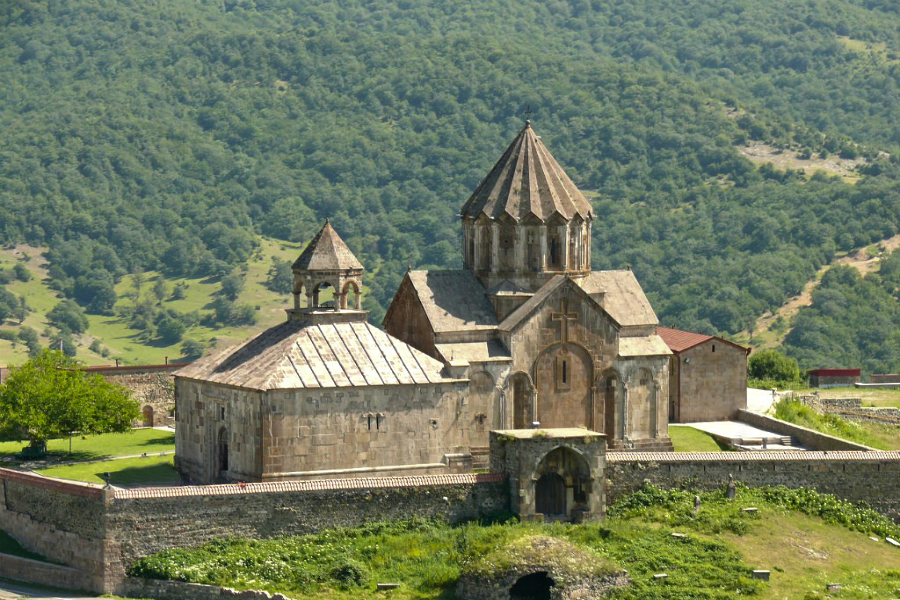
The Gandzasar complex comprises the main church and the vestibule. The St. Hovhannes Mkrtich church boasts a cruciform interior and a rectangular domed exterior, with two-story side-chapels in each corner. The temple’s architect ingeniously designed a striking drum adorned with 16 triangular grooves and intricate ornaments, each featuring its own unique sculpture at the base. The vestibule itself serves as the burial site for the Hasan-Jalalyan family.
Within the sturdy walls of Gandzasar, you’ll find eight small and two large rooms in the northern wing of the church, while a larger building in the eastern section once served as a school and later as a cloister-hotel. Notably, the temple’s walls showcase approximately 200 inscriptions, each holding historical significance.
Gandzasar’s altar houses the revered head of Hovhannes Mkrtich (John the Baptist), a sacred relic brought from Venice by Armenian merchants. The monastery stands as a testament to the rich cultural and religious heritage of the region, and its historical significance continues to captivate visitors to this day.
